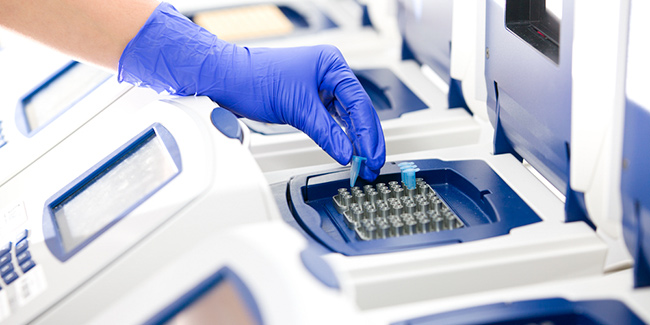Modern DNA testing has revolutionized the mechanisms used to identify and locate one’s biological family, whether we are talking about foundlings, adoptees, GI babies, Holocaust survivors, descendants of children from orphan trains, and many other categories in search of their genealogical roots.
Ancestry DNA testing has been combined with traditional adoption search methods to form a special branch of genetic genealogy (the science of utilizing your DNA test results for genealogical purposes). Genetic exploration also gives renewed hope to individuals who do not have access to traditional search methods.
With this in mind, let us analyze how AncestryDNA’s test can help you on your journey of discovery and which steps you need to take to maximize your search results.

Taking The AncestryDNA Test
AncestryDNA is a simple at-home test that utilizes your saliva sample to extract your unique DNA signature and check more than 700,000 locations in your genome. In other words, when looking for potential genetic matches, AncestryDNA offers more precision than other similar tests simply because it examines more locations within your genome and compares them with other genetic signatures in its database
Once your personal kit arrives, it is essential to register its unique ID code on the official Ancestry.com website since the company cannot connect your testing kit (and your final report) with your account without prior registration.
The results are usually generated within 6-8 weeks and they are available on your personal dashboard. They feature all sorts of interesting facts, but the most important parts for adoptees include geographic ancestral origins, genetic matches, and the ability to create personal family trees.
The overall reach of any ancestry DNA test is limited by the size of the company’s database (the people who already took the test before you). Luckily, Ancestry.com features the largest database of DNA signatures in the world, numbering more than 15 million people at this point. On top of this, AncestryDNA is an autosomal test, which means it covers both sides of your biological family and allows you to target your family history up to a thousand years ago.
Taking the test also grants you access to the genealogical part of Ancestry.com, with more than 11 billion historical records for you to peruse. These can help you learn more about your potential relatives from the past, including their birth dates & places, occupations, military service info, immigration dates, and much more. Finally, you can also access numerous orphanage and census records, which should be more than helpful during your search.
Reviewing Your Closest Genetic Matches
Once your results are in, you can view them on your personal account. On your DNA page, simply click View All DNA Matches to inspect a comprehensive list of all genetic relatives who have already performed the test. Your matches will be ranked by how much DNA you have in common – closer relatives will be positioned higher on the list. If you are unable to find any close relatives, you should know that Ancestry constantly updates your personal results as more people perform the test. Just because you cannot find any closer matches right now, it does not mean your search is over. One thing you should know about searching for your biological parents or children given up for adoption is that it can take a lot of time, sometimes even decades.

Given that Ancestry is the best and most famous genetic/genealogical conglomerate on the planet, other renowned companies will allow you to upload your raw DNA data file and explore their databases as well. This includes giants like Family Tree DNA, MyHeritage, and many others.
Once you have a comprehensive list of your genetic relatives, you can begin exploring their personal family trees, starting with the closest match. If their family tree is green, it is public and unlocked. If it is gray, they either locked it or have no tree. If it features a lock icon, you will have to ask them to share their data with you. Finally, a green leaf means that you have a common ancestor. You can accelerate this process by activating the so-called “common ancestor hints,” which is done by linking your (public or private) family tree to your test results and filling it out as much as possible. The more people in your family tree, the higher the likelihood of identifying a common ancestor with your close matches. When a potential common ancestor is identified by the system, the algorithm compares their name, parents, birthday, location, spouse, and children with the individual in your match’s family tree and if everything lines up perfectly, the hint is generated for you.
Contacting Your Matches
When you identify potentially valid matching targets, you can contact them directly by clicking their name and choosing the option Message. When contacting your relatives, it is best to approach them with a certain dose of sensitivity since your message might come off as a surprise or affect certain family dynamics.
If you need some help with the entire process, this AncestryDNA video should prepare you how to handle the unexpected and tell you more about the right approach to contacting your DNA matches. Lastly, not everyone checks their Ancestry messages on a regular basis so be patient and check back often for a reply.
Viewing Shared Matches
After successfully contacting your closer genetic relatives, you can inspect the Shared Matches Tab to see what relatives you might have in common. Make sure to review the available family trees of the shared matches looking for helpful and familiar places, surnames, and the same people within both groups.
If your first cousin match, for example, does not have a tree at the moment, you can always contact them, explain the situation, and maybe even work together on creating one. If you happen to identify an ancestor that appears on multiple family trees among your shared matches, you just found somebody worth researching. If you are having trouble differentiating between ancestral lineages, you can also calibrate your search to show only paternal or maternal matches.
Looking For Common Ancestors
When you manage to learn the actual name of a common ancestor, the next challenge is determining how closely they are related to you. This is where things get a bit more complicated, but do not be afraid to guess and move the relatives around your family tree until you find their actual place.
Just to illustrate the matter, if you find a common ancestor with a second cousin, chances are we are talking about your great-grandparent. Luckily, the Ancestry algorithm will be of great help during this part of your search and you will be able to determine the level of the biological relationship after a bit of trial & error.
Starting Your Descendancy Search
When you finally identify an ancestor that merits an in-depth exploration, you can start finding their descendants generation by generation. This basically means that you will be identifying their grandchildren, and so forth, up to the present day utilizing Ancestry’s genealogical database. All you have to do is work your way forward until you find a person that could be your parent.
ANY information will be extremely helpful at this point, including non-identifying and vague data from your adoption files, obituaries, ancestry trees, adoption-related groups on social media, reverse phone lookups, White pages, and anything else you can think of.
We recommend allowing for spelling errors during your search since census records are notorious for spelling the names of people incorrectly and the handwriting can also be quite challenging to read in some situations.
You can also use the so-called Ancestry “wild cards” if you are unsure about a particular spelling. Namely, you can use the symbols “*” and “?” instead of the letters you are missing. For example, if you cannot determine whether it is Nielson or Nielsen, spelling Niels?n will take care of that problem. You can also use the beginning of the word with a wild card to show all names and surnames containing it. For example, typing Lac* will show results for Laci, Lacie, Lacey, and Lacy.
Contacting Living Family Members
During your search, you will find potential cousins, siblings, aunts, uncles, grandparents, and even biological parents. Even if you fail to identify your real parents right away, do not shy away from contacting other relatives since they will most likely be able to fill in the gaps and provide you with something else to go on.
You can always consider hiring a professional researcher with a track record of helping adoptees and their parents reconnect, identify the unknown parent, and more. AncestryProGenealogists might be a good place to start since they offer free consultations and estimates, which is a perfect opportunity to get a feel for genealogical research and determine whether this is how you wish to proceed.
